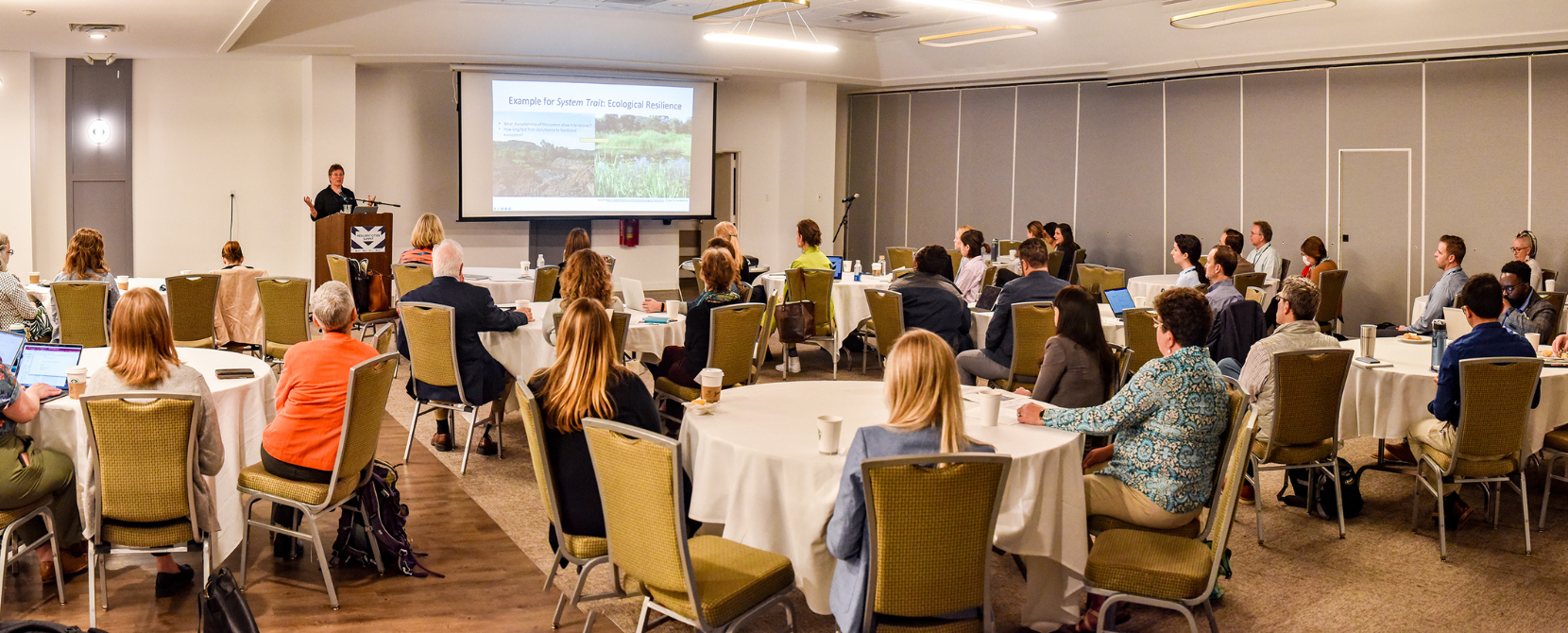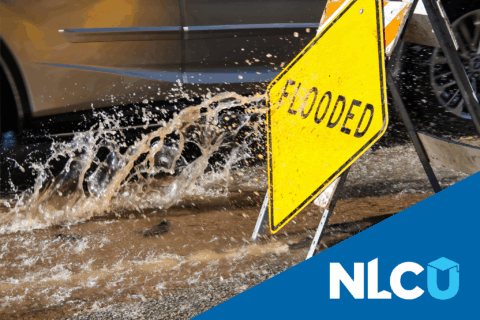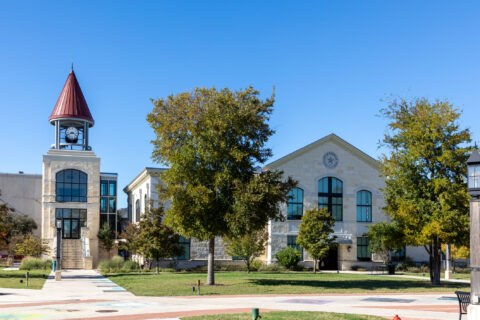Across the country, old and outdated infrastructure is vulnerable to a changing climate, from frequent and intense storms, extreme heat, and drought. Cities, towns, and villages in the Northeast are already experiencing the impacts of climate change as drainage systems are overwhelmed by heavy rainfall, utility systems are stressed by longer and more frequent heat waves, and sea level rise is lapping at the coast. Municipal governments have a unique and critical role in equitably investing in climate ready infrastructure. In June 2023, NLC co-hosted a three-day summit defined by open dialogue, innovative approaches to enhancing resilience and advancing justice, and exploration of local leaders’ roles in bolstering New England’s climate resilience.
Convening Local Leaders in Northeast
The 2023 Northeast Regional Resilient Cities Summit was designed and facilitated by NLC partners Urban Land Institute (ULI), ULI Boston/New England, and the Massachusetts Municipal Association. The Summit convened mayors and councilmembers, senior municipal leaders, and nationally recognized experts in the field of urban climate resilience to tackle the most pressing issues and questions surrounding resilient infrastructure for local communities.
Leveraging Unprecedented Amounts of Funding
The summit recognized the unprecedented funding through the Bipartisan Infrastructure Law (BIL) and the Inflation Reduction Act (IRA) and convened local leaders who could speak to this once-in-a-generation opportunity to pursue more sustainable, equitable, and resilient infrastructure projects to prepare for new climate conditions.
Sanjay Seth, who is the Chief of Staff for a 550-person unit of the U.S. Environmental Protection Agency (EPA) focused on the New England region and joined the summit as a keynote speaker, believes the stakes for climate resilience have never been higher. He applauded the great work cities are doing to address direct impacts around sea level rise, heat waves, droughts, and storms, but also encouraged city leaders to capitalize on BIL and IRA funding programs.
These programs represent one critical way that local leaders can leverage for infrastructure projects, particularly in the coastal resilience space. Summit participant Carly Foster, Vice President and Principal at Arcadis and Trustee for the Village of Warwick, NY, presented on how to effectively assemble a robust grant application. By assessing the fit and feasibility of the potential project, breaking down the application requirements, and pulling together a cost estimate, municipalities can improve their chances of securing this unprecedented level of funding.
Applying a Climate Resilience Lens to Municipal Government Work
Participants spent the three days of the summit invested in dialogues about strengthening cities as centers of opportunity, leadership, and governance. The summit recognized the value of having local leaders align on their definitions of climate resilience and explore the climate resilience lens. Once aligned, local leaders can then explore how to apply this lens to other core functions of municipal governments and strengthen all aspects of work by identifying synergies and opportunities to address more than one issue simultaneously, such as enhancing resilience and supply of homes to address both the climate and housing crises.
Successful infrastructure projects – coastal and beyond – require collaboration that is multidisciplinary, inclusive of lived experiences of diverse cross-sectors of the population, and across all levels of government. Local infrastructure decisions are more effective when they’re designed with state or federal funding in mind. As one speaker noted, engage in infrastructure planning “in a way that works for us [at the municipal level] but in a way that is not isolated.”
Diving Deep into Equitable Resilience Plans
Now in its sixth year, the summit has also increasingly focused on the escalating climate crisis and the disproportionate strain placed on marginalized communities. In one of the workshops focused on regional resilience, workshop organizations discussed how we cannot truly be resilient until we are all included in the mission to achieve that vision. Rising sea levels, extreme weather events, and other climate-related hazards often hit marginalized communities the hardest, exacerbating existing social and economic inequalities.
During a session on equity-centered design strategies Aubrey Germ, Climate Resilience Planner for the City of Baltimore and Wendell T. Joseph, Project Planner at Toole Design spoke to the value of resilience hubs, neighborhood centers that meet the needs of residents. For example, in Baltimore, a network of resilience hubs not only provided climate resilience but supported the community during the COVID-19 pandemic. Ultimately, they recommended local leaders support existing resilience infrastructure, network organizations together, and utilize federal funding to strengthen these hubs when possible.
Attendees also noted that to address social infrastructure, the voices of grassroot organizations and minority groups should be elevated. And even small communities that are majority white have a critical role to play in racial justice work. There is funding available to address these issues, and leaders can learn from past examples of success such as the Massachusetts Municipal Vulnerability Program and the Baltimore City community resiliency hub program, as highlighted previously.
Encouraging Partnerships Between the Public and Private Sector
Leaders’ approaches to resilience improvements matter. To truly understand current issues, leaders need to gain an understanding of the problem first before offering solutions, start with the status and track all progress to understand growth, and maintain hope by being proactive and focused on transformative work.
Through BIL, IRA, and a renewed focus on leadership and change at the local level, regional partnerships between the private sector and municipalities can drive tangible change and actionable resilience plans for communities today and for generations to come. And, as the Northeast continues to experience volatile weather patterns and strained utility systems due to climate change, collaboration with community leaders, government officials, and private sector partners will become even more important—these issues will require an all-hands-on-deck approach.
The 2023 Northeast Regional Resilient Cities Summit served as a platform for committed climate champions to share their expertise – and it is their voices, stories, and strategies that can inform climate resilience strategies in coastal regions all over the country.
Gain More Insights from the Summit
Local leaders convened at the 2023 Northeast Regional Resilient Cities Summit convened to tackle the most pressing issues and questions surrounding resilient infrastructure for local communities. The after-action brief details takeaways from the event.








